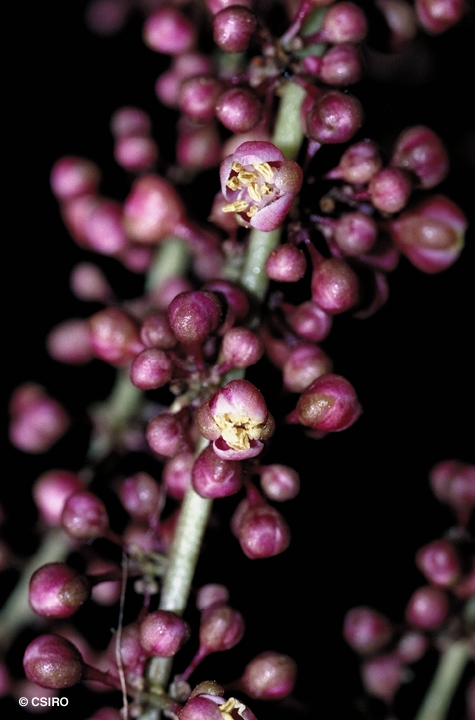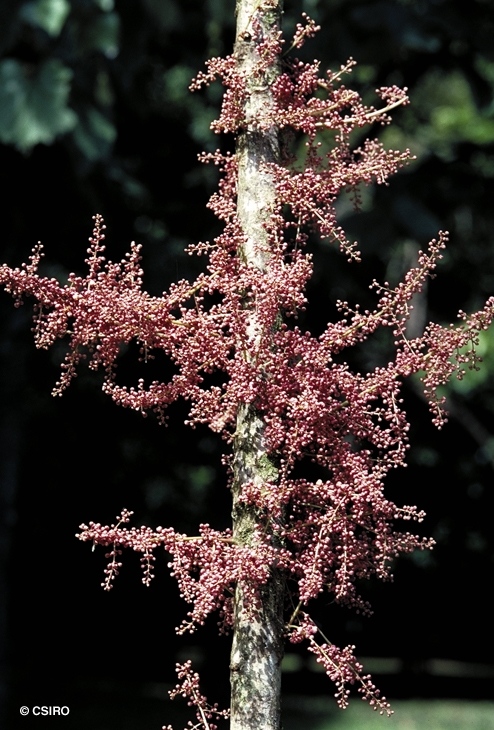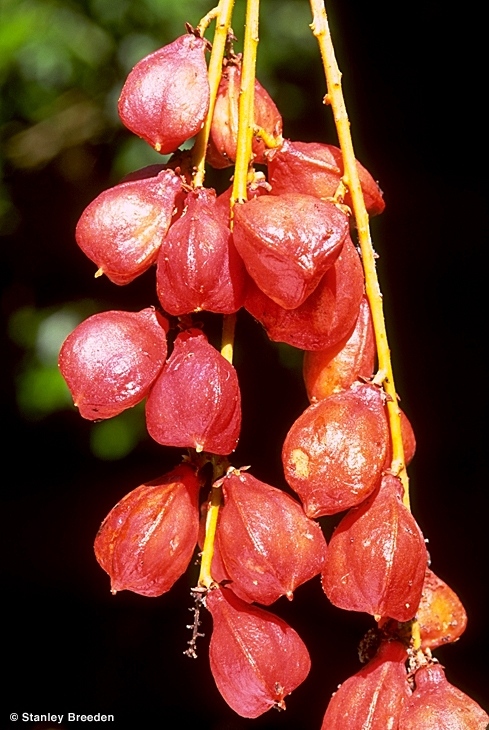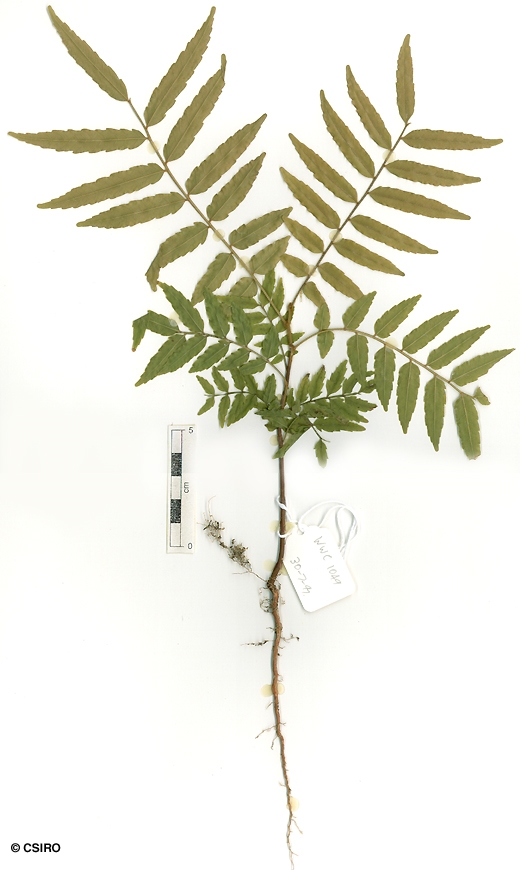Australian Tropical Rainforest Plants - Online edition
Lepiderema hirsuta S.T.Reynolds






Reynolds, S.T. (1981) Austrobaileya 1(3): 489. Type: Cook District: Oliver Creek, tributary of Noah Creek, 21 Aug 1972, L.J. Webb & J.G. Tracey 10891 (BRI holotypus).
Noah's Tamarind; Hairy Lepiderema
Usually grows into a small tree but also flowers and fruits as a shrub.
Terminal buds and young shoots densely clothed in +/- erect ginger-brown hairs. Leaflet blades about 6.5-19.5 x 0.8-4 cm. Teeth usually present on the margin of the leaflet blades but generally towards the apex. Midrib usually hairy on the upper surface of the leaflet blades. Lateral veins depressed on the upper surface of the leaflet blade and curving inside the margin. About 40 leaflets in each compound leaf. Leaflet stalks swollen.
Inflorescence about 5-15 cm long, produced on the stem from ground level and all the way to the upper crown. Calyx lobes about 3-4.5 mm long, glabrous. Petals about 2.5 mm long, glabrous. Stamens eight, staminal filaments to 2 mm long, hairy, at least towards the base.
Fruits usually 3-lobed, +/- obcordate, about 1.8-2 x 1.5-1.8 cm, calyx lobes persistent at the base. Aril yellowish-orange, slightly fimbriate at the apex, completely or almost completely enclosing the seed. Cotyledons green.
Stem clothed in brown erect hairs. First pair of leaves compound, leaflets about 5-10 per leaf, each +/- sessile, margins coarsely toothed to almost lobed. Compound leaf rhachis narrowly winged, ending in a fine tip. At the tenth leaf stage: compound leaf with about 14-18 leaflets, leaflet blades +/- lanceolate, +/- sessile, midrib raised on the upper surface of the leaflet blade, margins with about 4-9 teeth on each side. Compound leaf rhachis, petiole and leaflet stalks hairy. Very small red glands just visible with a lens on the upper and lower surfaces of the leaflet blades. Stem clothed in long brownish hairs. Seed germination time 19 to 22 days.
Endemic to NEQ, known only from the Noah Creek area north of the Daintree River, the McDowall Range and the Mt Pieter Botte area. Altitudinal range from near sea level to 900 m. Grows as an understory plant in well developed, undisturbed lowland and upland rain forest.





